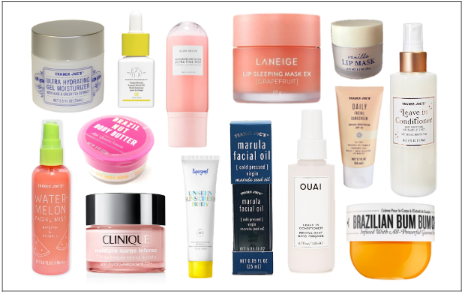Waves rise and crash in the morning as surfers begin their ritual before paddling out into the place they call home. Ranging from soft entry-level beach breaks that cater to everyone’s needs, to advanced reefs that break hollow, putting a knot into your stomach. This slight stretch of land on the Central Coast of California is home to a wide variety of waves.
Starting the list is Guadalupe. The beach has been closed for months and is beginning to be reopened on Saturdays and Sundays from 7 a.m. to Sunset. The closure seen throughout the winter left the beach desolate of surfers. Guadalupe is one of the steepest beaches around SLO county, meaning greater wave height. The beach is also unprotected from almost any angle, meaning that all types of swells, such as north, west, and even slightly south swells, can enter the beach. Due to its remoteness and lack of crowds—as only a handful of diehard locals surf the spot, it goes largely unridden. Guadalupe is for people with enough experience to feel confident with the variability of the waves and currents
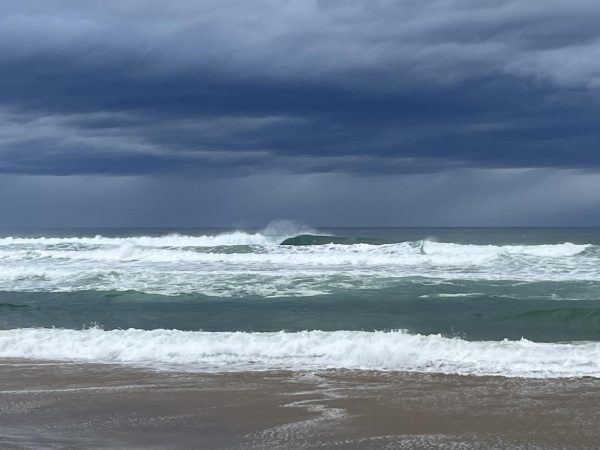
.
About 5 miles north of Guadalupe, you enter Oceano. A unique break in SLO county, Oceano allows vehicles to travel 5 miles down the beach. This allows for the opening of scalloped sandbars to explore. When the beach is scalloped, a steeper section will take the swell better, allowing the waves to have a shoulder to ride on instead of just closing out. The beach allows both left and right breaks; depending on the swell type, one might be better. Oceano breaks best when a combo swell is in the water. When a south swell and north swell come together, they create a peak on sandbars that breaks both ways. However, on multiple occasions, Oceano has had shark encounters. Though it may be scary, the waves Oceano can produce are the reasons why it is a go-to spot. Five miles of beach also allows crowds to disperse much more, allowing the possibility to surf a break to yourself.

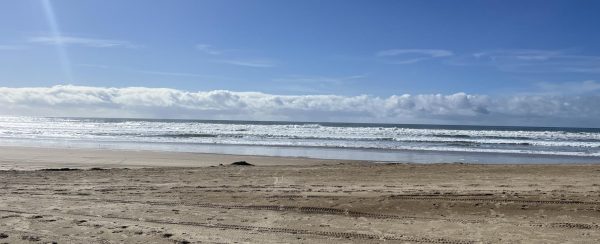
The next major break is Pismo Beach, one of the most popular beach breaks, and one of the more manageable and consistent breaks on the Central Coast. The accessibility and location make the beach perfect for all different surfing disciplines. The soft waves allow time to stand up and ride without minimal effort, making this a playground for beginners and locals alike. The beach break sandbars allow for lefts and rights to break. The pier allows sand to build up, creating nice sandbars. Right next to the dock on both the north and south sides are generally the busiest. The crowd is also a factor, as most people show up around 8:30 a.m. to 9 a.m. on the weekends.

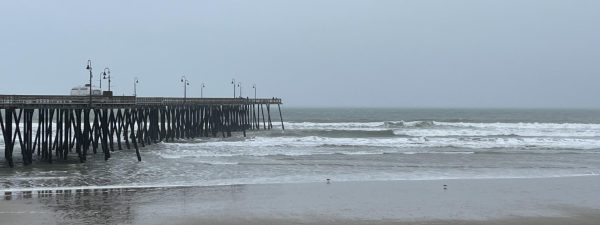
Saint Anns is considered one of the softer breaks in Shell Beach. This wave breaks almost exclusively right. With one central take-off spot, this break like most in Shell Beach, is very susceptible to crowds. To catch waves, you must be more aggressive with the people around you and be in the right spot. This spot is like the tide on the lower side—specifically, a tide going from high to low. Three to 1.8 feet is the sweet spot. If the tide is too high, the wave rolls too much, and it’s easier to catch on a longboard. With low tide, the wave thumps, and rocks start to expose themselves on the inside.
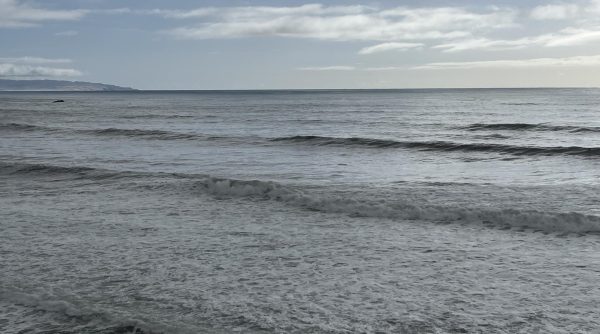
Sewers is the break almost directly next to Saint Ann’s, separated by a skinny, outcropped rock dividing the two. Waves at Sewers, unlike Saint Anns, break both left and right. The left is generally the more defined wave—breaking harder, longer, and faster. In turn, the left is more sought out in the lineup, but the right can still break with authority and be very fun. Sewers break best at a medium tide, meaning the water isn’t too high and swamping the break, but not too low to where it’s just dumping, making it unrideable. Sewers create a unique experience, with waves appearing rather small and then increasing in size as they get closer. Sewers is also unique in that longboarders are not allowed. Not officially, but longboarders will be harassed by other surfers. It’s a short border break, meaning it can become aggressive or have silent tension in the water. Like all breaks in Shell Beach, when it’s breaking well, the beach breaks are closed out and generally “unsurfable”. All surfers end up at Shell Beach, crowding every lineup as soon as the sun rises.

The Finger is further down in Shell Beach in front of SpyGlass Inn Restaurant. This reef break only breaks left and will only break on a south swell coming through on a lower tide. The take-off is rather aggressive as the waves can be heavy and fast, and making the drop is an almost must as right in front of the take-off spot, there is a rock formation that jets out. Falling in front of the rock might not cause you to hit it, but it puts you in the impact zone for the remainder of the set, which can wash you up on the rock.
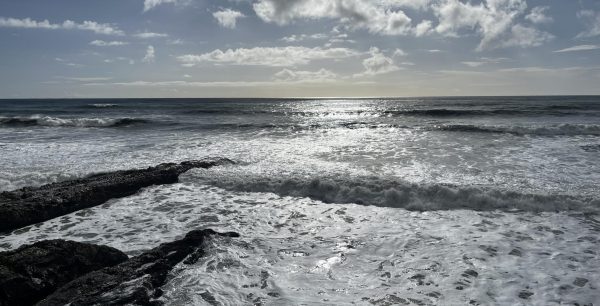
Reef Rights is the break next to The Finger and is an exclusive right-handed break. Reef rights break right off in front of The Cliffs Hotel. It breaks off a shallower shelf like many other breaks in Shell Beach. The wave is like a medium tide; if it is too high, it rolls underneath you, making it almost impossible to catch. If the tide is too low, the wave breaks too fast and too top to bottom, making it almost unrideable.
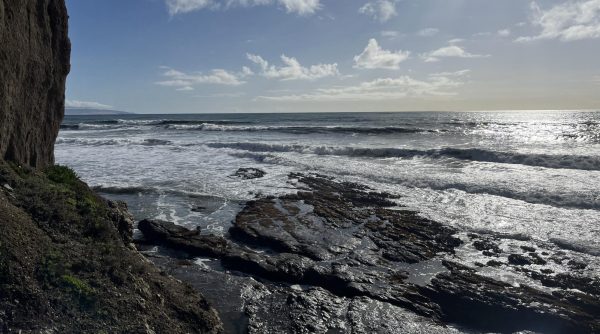
Palisades and Reef Rights connect as the outcrop of rocks and shelves are on the far left side of the beach However, Palisades is instead a large stretch of sand for Shell Beach, with some rocky sections underwater. There can be multiple peaks when Palisades breaks well up and down the beach. Palisades is again a medium tide but is more on the higher side, with softer and beginner-friendly waves. Out of all the breaks in Shell Beach, Palisades is the most approachable for all skill levels and, in turn, can become the most crowded. Left and right can break, and most often, the crowd is dominated by longboarders as the wave characteristics, a mushy, slow wave, is what longboards thrive in.
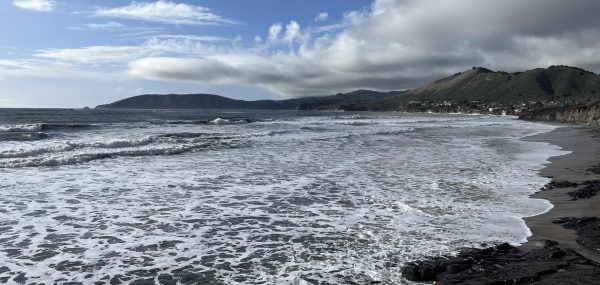
Morro Bay is one of the most popular beach breaks in North County. This break funnels surfers from San Luis, Morro Bay, above the grade, and more. Morro Bay breaks down into three small sections. The rock is the first break and can be the most popular. The main parking lot, underneath Morro Rock, is where people paddle out from.
Then there is The Pit. The Pit has a separate, smaller parking lot and is further down the beach. Then, another smaller parking area is in front of Morro Bay High School. Each break is relatively similar, and one can be better than the other. It purely depends on how the sandbars are operating on any given day. Morro Bay likes pushing tides, meaning lower tides going to higher tides. If the sandbars are good, they can handle decently-sized waves. About 8-10 feet before it starts to close out.
South Jetty is a spot that requires dedication to get to. To get to South Jetty, you must go to Morro Rock and paddle across the harbor, then get out and walk over the jetty outcrop.. The wave is like a low tide; it won’t break right on a high tide. The wave bathymetry [the bottom of the ocean floor], is like a tide going lower. This characteristic makes it unique as most beach breaks, go from a lower to a higher tide. The paddle out can be daunting for surfers as well. The only way to get out to the lineup effectively is to paddle next to the jetty wall. The jetty can dissipate some of the wave energy. However, the jetty only does a little on big days, 6-8 feet and more significantly. It becomes a timing game to paddle out between sets to avoid getting caught inside. Both left and right break at South Jetty; a left breaks into the jetty, and a right breaks off where the left is. They essentially split the peak. Another factor is that the crowds on weekdays are usually minimal, or there is no one out; you could surf it yourself. The weekend is slightly different when people have more time, and there can be 10 or 15 guys. Still, it is usually very quiet relative to the other breaks in SLO County.

All surfers have their go-to spots and enjoy different breaks for different reasons. Brad Osborne, a teacher at Arroyo Grande High and a helpful member of the AGHS surf team, finds Pismo Beach during the week one of his go-to spots for its convenience.
“[With school starting at 8:30] I have so much more time in the mornings,” Osborne said.
He can now get out in the water and surf for 45 minutes to an hour daily when the waves are good. When time isn’t a constraint, like on weekends, he enjoys traveling up to North County to find waves.
“Studios [Cuyucos] always have great sandbars,” Osborne said.
He enjoys less crowded spots.
“I’d rather surf less crowded mediocre waves, [than] overcrowded good waves any day,” Osborne said.
That ties into the boom in popularity all outdoor sports saw during the COVID-19 pandemic, especially surfing. All breaks up and down the coast have seen more significant numbers than ever. This causes a lot of surfers to search for waves with less and less of a crowd, even if that means sacrificing wave quality.
It’s required surfers to look for ways around it. “That’s why I dawn patrol (surfing before light), so I don’t have to see them (new surfers),” Osborne said.
Surfers also feel that beginners have to understand where to and where not to surf. Forest Bonner-Burlew, a former AGHS student, and 11-year surfer, mentioned, “Surfing can be very deceptive, you can look at a spot and see some waves that are playful and tame, but they are much more dangerous and powerful than you’d expect,” said Bonner-Burlew
As much as surfers might gripe, a new generation of surfers may be beneficial to the sport.
“If people don’t start surfing and fall in love with it, then there won’t be another generation to pass down the sport to,” Bonner-Burlew said.
There’s a little bit of bad and a little of good, it is a necessary evil. It’s also caused some of the more toxic elements of surfing to dwindle. Localism is a big one. With the rise in popularity, Localism has drastically reduced or been shrunk to only a few breaks along the coast. It’s hard to enforce older surfing traditions with a new generation of surfers that don’t understand.
Jack Canigulia, a 13-year surfer, and member of AGHS, summed up localism well. “People aren’t going to stop surfing, just because the locals don’t like it. They [locals] don’t do anything about it.” Canigulia said.
Surfing on the central coast is popular. It’s an outdoor sport that allows people to be active at any time of the day, 7 days a week. Surfing will continue to grow and thrive. The only thing our local area can do is to make sure we embrace the inevitable rise in popularity of surfing.







